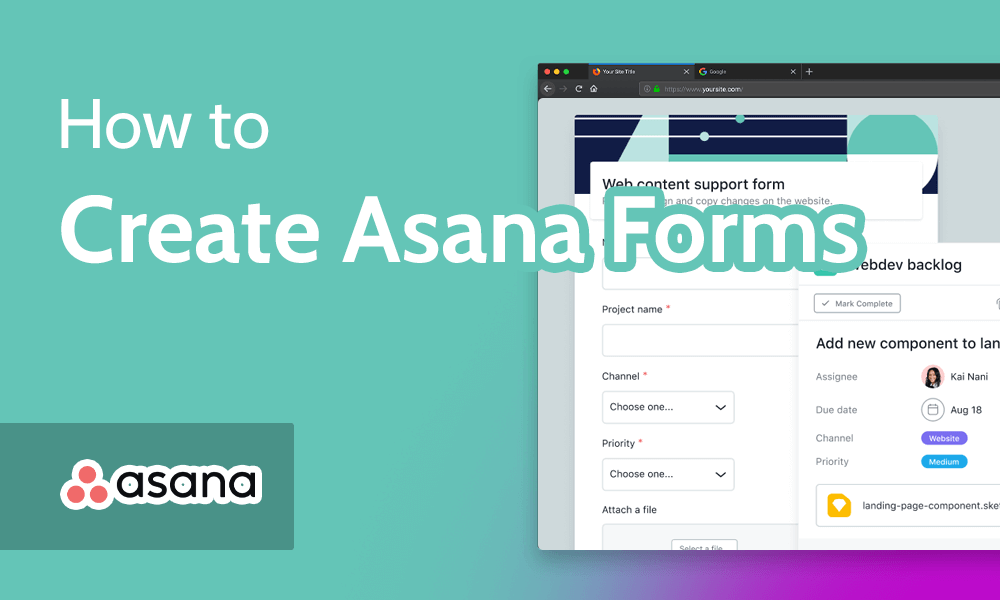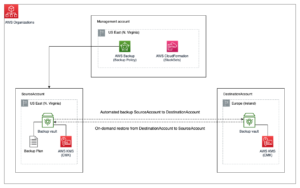 How to Create Asana Forms in 2023 [Step-by-Step Tutorial] Search
How to Create Asana Forms in 2023 [Step-by-Step Tutorial] Search Cloudwards.net may earn a small commission from some purchases made through our site. However, any affiliate earnings do not affect how we review services.
Asana Forms offers several benefits for your project management and team collaboration. By collecting data through a standard intake process, forms help ensure that everyone is on the same page and that critical details aren’t overlooked.
Key Takeaways: Creating Forms in Asana
- All Asana forms can be located from their respective projects by clicking on the “customize” button on the top right of your screen and scrolling down to the “forms” section.
- Asana allows you to add an assignee by default with a custom confirmation message. However, this feature is available only in the Business plan.
- You can automatically add the respondents as a collaborator when they submit their form.
Asana Forms is a powerful and flexible tool that can help teams of all sizes streamline their project management workflows and collaborate more effectively. Forms help you reduce manual data entry and save time on administrative tasks, allowing you to focus on higher-level strategic work.
In this guide, we’ll show you how to create forms in Asana with an easy step-by-step tutorial. You can also read our in-depth Asana review to learn more about the software.
Asana Forms is a feature that allows you to gather structured information from your team members or clients without the need for an external app or a third-party tool.
Yes, you can create and share multiple forms in Asana.
Yes, you can create and share multiple forms in Asana.n”}},{“@type”:”Question”,”name”:”Are Asana Forms Available on Every Plan? “,”acceptedAnswer”:{“@type”:”Answer”,”text”:”
No, Asana Forms are not available in its Basic plan.n”}}]}]]>
Why Use Asana Forms?
Asana is an easy-to-use project management software suite that can help streamline your team’s workflow and make project management more efficient. Once you connect Asana Forms to your internal processes, you can quickly gather information from team members or clients and ensure all the information is collected in one place, where project stakeholders can find it.
You might be thinking that you can do all these things without using forms. However, Asana Forms offers some other key features and benefits for teams that you might not be aware of.
1. Streamlined Data Collection
With Asana as your task management software, you can create custom forms to gather and manage information from your team or clients. This streamlines the data collection process and ensures you have all of your important information centralized in one place.
You also have customization options in your forms to collect specific information that suits the requirements of your project or business.
2. Consistency & Accuracy
Consistency and accuracy are an important factor when managing multiple projects with different teams and stakeholders. Any miscommunication can lead to unnecessary delays or mistakes. It’s also good practice to collect information in one standardized manner rather than having different input styles.
Asana Forms can help you ensure you collect all the necessary information, including details like specific descriptions and attachments. You can make sure that the responses submitted are complete. Later, these responses can be converted into a new task if required.
3. Increased Accountability
Asana ranks among the best project management software for multiple projects. The forms in Asana can help increase accountability for each project participant by providing a clear record of when and by whom data was created.
For example, you can search all your submissions by the source of the form. This can help avoid confusion and disputes, ensuring that everyone is held accountable for their contributions to the project.
How to Create Forms in Asana
Asana offers the ability to create no-code forms to standardize your data collection and storage processes. Follow this Asana Forms tutorial to create a form in your workspace.
- Accessing the Forms
Log in to your Asana account and open the project in which you would like to create a new form. Click on the “customize” button in the top-right corner of your screen. A dropdown menu will appear. Scroll down or click on “forms” at the left-hand pane and click on “+ add form.”
- Setting Up the Form
Every form collects a name and email address by default. However, you can delete these fields if you’d like. You can add more form fields from the “questions” tab under the “form content” section on the right pane. Simply click and drag the questions you’d like to include in the form, add a task description if required and click on “done.”
- Viewing and Sharing the Form
If you wish to see what your form looks like before submitting it, click on the “view form” button. You can go back by clicking on the vertical ellipsis icon and hitting “edit.” When you’re ready to share the link, click on the “copy form link” button. The star near the field name indicates that it’s a mandatory field, though fields can be made optional (see step two of “How to Customize Asana Forms.”)
Note that forms created are private to your organization by default, but you can change the access settings from the “select who can access the form” menu.
How to Customize Asana Forms
Asana forms are dynamic in nature. This means that you can edit them at any point, even after you’ve created and shared them. Editing an already existing form is not that different from creating a new form. Just follow these simple steps to edit your forms.
- Editing the Forms
Open the project with the Asana form you would like to edit. Click on the “customize” button in the top-right corner of your screen. Scroll down, or click on “forms” at the left pane on the dropdown menu. Click on the vertical ellipsis button of the form you want to edit and then click on “edit.”
- Deleting a Field
To delete the default name and email fields, or any other field, click on it, then click on the trash icon to remove the question from the form. Note that if you delete the email address field, submitters of the form will not receive any email confirmation regarding their submission. You can also make the field optional by clicking the toggle labeled “required.”
- Creating a Task From the Form
Click on “settings” in the right-hand window. Choose a field from the dropdown menu labeled “select a field for task titles” to name the task created from the submissions. Tasks created from form submission requests can also be assigned to anyone from your team.
Final Thoughts
By learning how to use Asana effectively for project management, you can use it as a hub for all your information and stay on top of all your projects. Whether you’re looking to create new tasks, request clients to fill out forms and track progress, or add images and attachments to your documents, Asana offers the tools you need to make sure nothing slips through the cracks.
Asana Forms is not available on the free plan. If you’d like to know which plans have Asana Forms, along with other advanced tools, you should check out our Asana pricing guide and choose a plan that suits your needs.
Please keep in mind that specific features within Forms such as header customization, multiple forms per project and confirmation message customization are also only available to Business and Enterprise users.
If you’re new to Asana, we recommend you get started with our Asana tutorial for an understanding of how to integrate it into your workflows seamlessly.
Let us know if you liked the post. That’s the only way we can improve.
Also interesting
Most popular on Cloudwards
Last published on Cloudwards:Because the Cloudwards.net team is committed to delivering accurate content, we implemented an additional fact-checking step to our editorial process. Each article that we fact check is analyzed for inaccuracies so that the published content is as accurate as possible.
You can tell that an article is fact checked with the Facts checked by symbol, and you can also see which Cloudwards.net team member personally verified the facts within the article. However, providers frequently change aspects of their services, so if you see an inaccuracy in a fact-checked article, please email us at feedback[at]cloudwards[dot]net. We strive to eventually have every article on the site fact checked. Thank you.
Source




